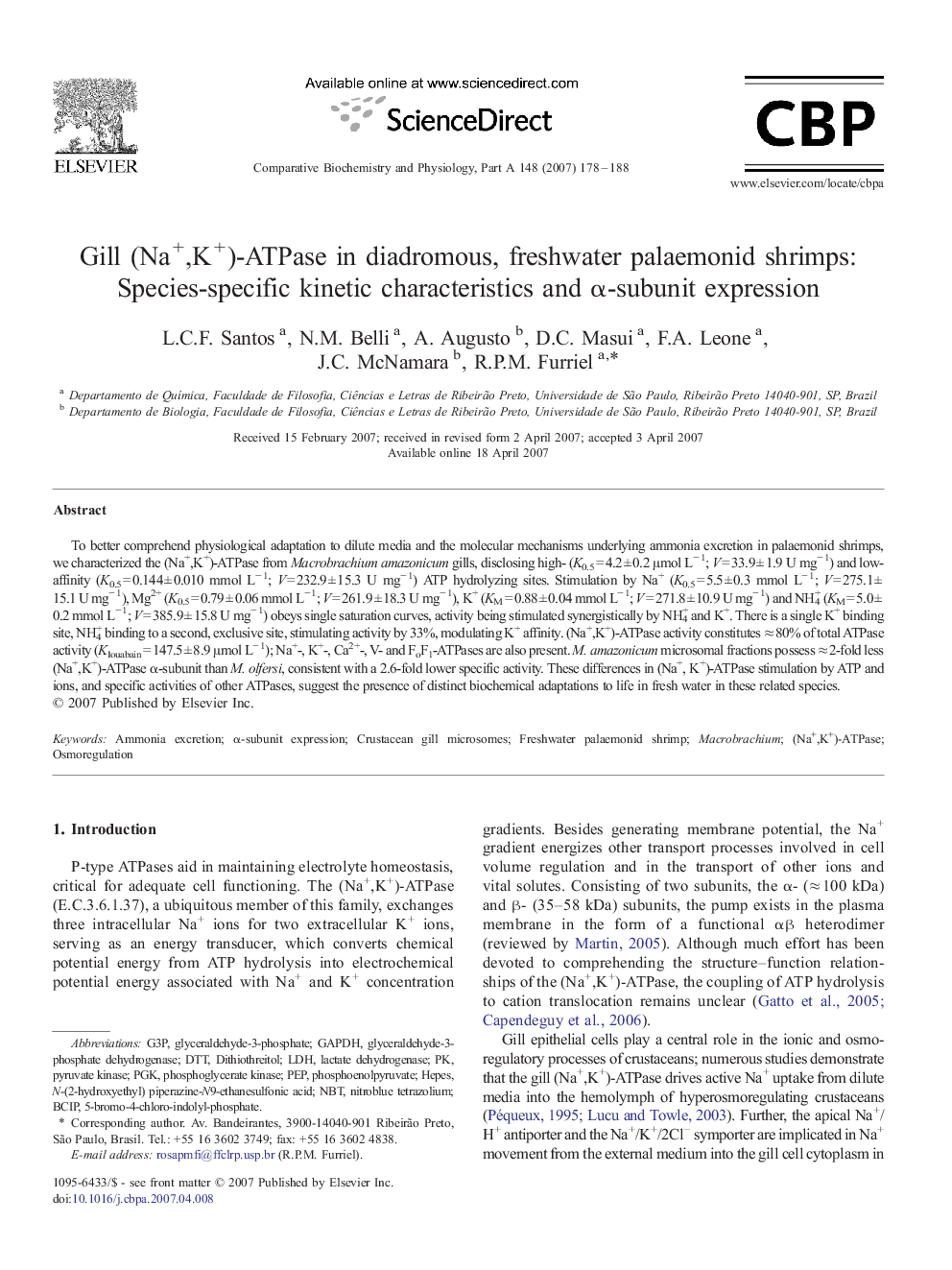| Article ID | Journal | Published Year | Pages | File Type |
|---|---|---|---|---|
| 1974758 | Comparative Biochemistry and Physiology Part A: Molecular & Integrative Physiology | 2007 | 11 Pages |
To better comprehend physiological adaptation to dilute media and the molecular mechanisms underlying ammonia excretion in palaemonid shrimps, we characterized the (Na+,K+)-ATPase from Macrobrachium amazonicum gills, disclosing high- (K0.5 = 4.2 ± 0.2 μmol L− 1; V = 33.9 ± 1.9 U mg− 1) and low-affinity (K0.5 = 0.144 ± 0.010 mmol L− 1; V = 232.9 ± 15.3 U mg− 1) ATP hydrolyzing sites. Stimulation by Na+ (K0.5 = 5.5 ± 0.3 mmol L− 1; V = 275.1 ± 15.1 U mg− 1), Mg2+ (K0.5 = 0.79 ± 0.06 mmol L− 1; V = 261.9 ± 18.3 U mg− 1), K+ (KM = 0.88 ± 0.04 mmol L− 1; V = 271.8 ± 10.9 U mg− 1) and NH4+ (KM = 5.0 ± 0.2 mmol L− 1; V = 385.9 ± 15.8 U mg− 1) obeys single saturation curves, activity being stimulated synergistically by NH4+ and K+. There is a single K+ binding site, NH4+ binding to a second, exclusive site, stimulating activity by 33%, modulating K+ affinity. (Na+,K+)-ATPase activity constitutes ≈ 80% of total ATPase activity (KIouabain = 147.5 ± 8.9 μmol L− 1); Na+-, K+-, Ca2+-, V- and FoF1-ATPases are also present. M. amazonicum microsomal fractions possess ≈ 2-fold less (Na+,K+)-ATPase α-subunit than M. olfersi, consistent with a 2.6-fold lower specific activity. These differences in (Na+, K+)-ATPase stimulation by ATP and ions, and specific activities of other ATPases, suggest the presence of distinct biochemical adaptations to life in fresh water in these related species.
